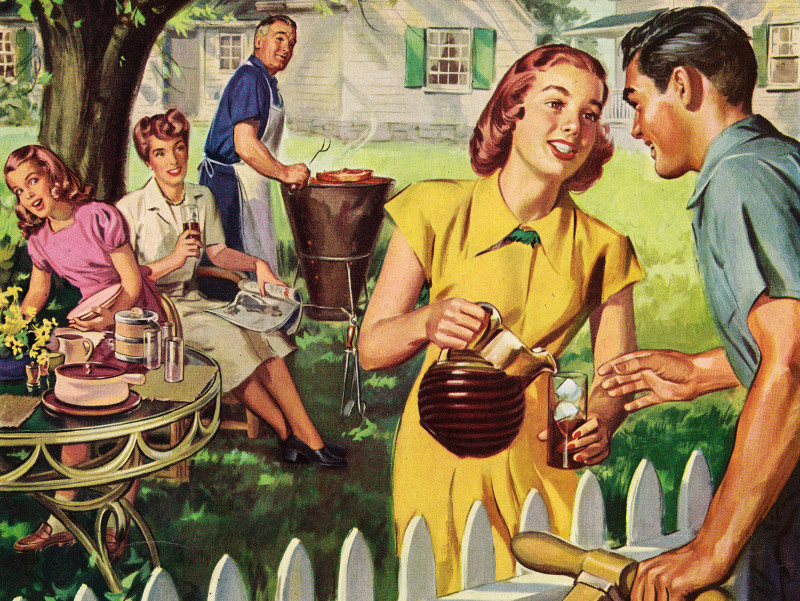You'd be forgiven for not knowing this, but Wednesday is National Iced Tea Day. And while it's only an unofficial food holiday, it makes sense that Americans would set aside a day to celebrate this favorite summertime sip: We popularized it.
Tea itself, of course, has been consumed in America since Colonial times. (Remember the Boston Tea Party?) But before you could drink iced tea, you needed ice — and that was a rare summer luxury until the early 1800s. New Englanders could cut large chunks of ice from frozen ponds and lakes in winter, then insulate it with sawdust so that it could last into the warmer months. But in the hot South, snow and ice didn't exactly abound.
Then, around the turn of the 19th century, ice entrepreneurs from Northern U.S. states started shipping ice down to Southern states and the Caribbean. Americans would come to dominate the 19th century global ice trade. And there's good reason to believe plenty of that ice was being used to serve tea on the rocks.
Early recipes had more in common with the booze-laden Long Island iced tea* than the stuff Lipton sells. Indeed, Americans were drinking iced tea in the form of alcohol-drenched punches at least as far back as the Colonial era.
The classic Philadelphia Fish House Punch, first imbibed in the early 1700s, was often diluted with tea. In his book Punch, liquor historian David Wondrich writes that the recipe for Regent's Punch, dating to 1815, also packed quite the potent wallop: Not only did it call for green tea and arrack, a rumlike liquor from South Asia, it also threw in citrus juice, sugar, champagne, brandy and rum. No wonder, then, that one early drinker described the Regent's as imparting a "mad, delirious dizziness," as Wondrich writes. Overall, these strong, early punches had little in common with the light, fruity sippers served today.

Recipes for nonalcoholic iced tea didn't appear in print until 1876 — when one was included in Estelle Woods Wilcox's Buckeye Cookbook. But iced tea drinking habits really started to shift around the turn of the 20th century, when the nonalcoholic version was popularized at the 1904 World's Fair in St. Louis. Linda Stradley writes on What's Cooking America that the hot summer weather caused fairgoers to ignore hot beverages in favor of cold ones — including iced tea. The fair's 20 million visitors cooled themselves with iced tea and brought the new style back to their homes throughout the United States and the world.
